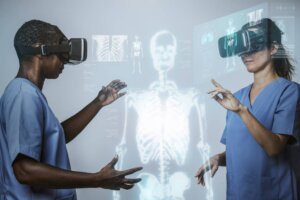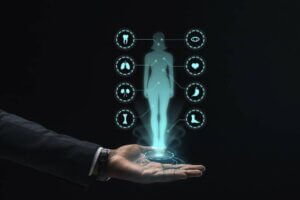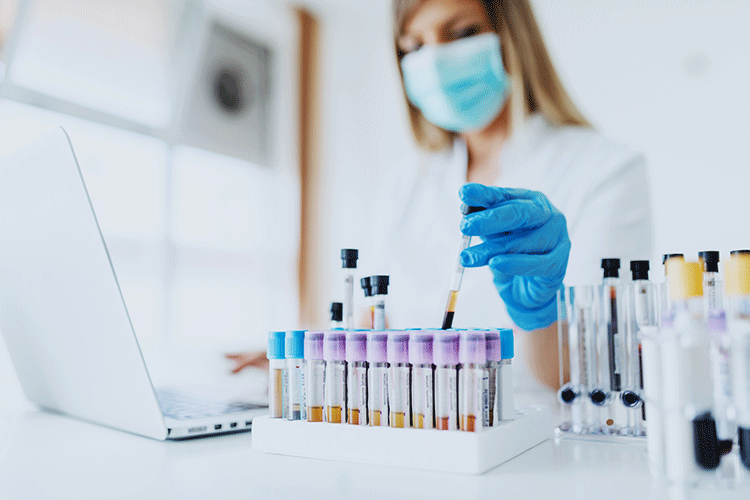Imagine walking into a hospital where diagnosis happens in minutes, treatment is tailored to your DNA, and help is one voice command away. No, it’s not sci-fi, its AI in healthcare.
Thank you for reading this post, don't forget to subscribe!Artificial intelligence is redefining medicine, not just in labs and top hospitals, but everywhere.
Whether you’re a seasoned clinician, a mid‑career professional, or someone curious about where health tech is heading, this is for you.
In this post, we’ll explore:
- How AI rose to prominence in healthcare
- The real benefits it brings
- The glaring challenges it faces
- And where we’re headed next (worldwide, not just in one country)
Let’s dive in!!!!
The Rise of Artificial Intelligence in Healthcare

The use of AI can be dated to the early 1970s and it’s been making progress ever since.
AI‑powered diagnostics, monitoring, and patient support.
AI’s superpower is pattern recognition, from X‑rays and MRIs to continuous vital‑sign data.
In diagnosis, AI models trained on massive datasets can detect disease early, sometimes before symptoms fully appear.
Think: spotting a tumor in imaging that’s too subtle for the human eye or flagging early signs of kidney damage from lab trends.
Monitoring is another frontier. Wearables and smart devices feed AI real-time data (heart rate, sleep, glucose, etc.).
AI can raise alerts, suggest checkups, or even issue emergency warnings if trends get dangerous.
Then there’s patient support: chatbots, virtual nurses, and conversational health agents guiding patients, scheduling appointments, reminding medications, or triaging symptoms before a doctor even sees you.
This kind of extension is what makes care continuous, not just episodic.
Hospitals and health systems adopting AI tools.
Around the world, leading institutions are already embedding AI in healthcare practices. For example:
- In radiology and pathology departments, AI tools assist in analyzing scans (CT, MRI, X-ray) to spot anomalies faster and more consistently.
-
In cardiology, AI helps predict arrhythmias or heart failure health risk by combining ECG data, imaging, and patient history.
-
Some systems use AI to optimize hospital operations, bed allocation, staff scheduling, supply chain logistics.
These use cases are spreading from large academic medical centers in Europe, the U.S., and Asia, to innovative startups in Latin America and Africa.
Key Benefits of AI in Modern Medicine
Speed saves lives and AI accelerates many diagnostic tasks.
AI models can process thousands of images or lab reports in seconds, flagging those that require immediate attention.
Once you combine that speed with accuracy, you reduce delays in treatment.
In many studies, AI has matched or exceeded human performance in specific tasks (e.g. detecting lung nodules, classifying skin lesions).
It’s a powerful second set of eyes catching what might slip through fatigue or human oversight.
Reduced human error and improved patient outcomes
Humans make mistakes. AI, when well‑trained, doesn’t forget, doesn’t get tired, and doesn’t have mood swings. That means:
- Less chance of missing drug interactions or contradictory prescriptions
-
Alerts when vital trends deviate from safe thresholds
-
Consistency across patient populations, not dependent on hospital or physician skill
Moreover, AI aids in personalized medicine.
For chronic conditions (diabetes, hypertension), AI can optimize dosing, predict flareups, or adjust therapy based on response.
Studies already show AI outperforming clinicians in dose prediction models (e.g. warfarin dosing) and better estimating adverse drug reaction risks.
Also, AI lifting administrative burdens automating recordkeeping, managing schedules, and summarizing patient histories, gives clinicians more time for human tasks like patient conversation, empathy, and decision-making.
Challenges of AI Integration in Healthcare
AI is hungry for data.
Medical data is intensely sensitive. How do we ensure privacy, consent, and fairness?
1.Bias & representation issues
Many AI models are trained on data from high‑income countries.
When used in underrepresented populations, diagnostic tools may misclassify or underperform.
For instance, millions globally could be misdiagnosed if models fail to “see” them well.
- Transparency (“black box” problem
Some AI models are so complex that even engineers struggle to explain how they make decisions.
In medicine, transparency is critical.
How did AI arrive at that diagnosis? Explainable AI is a growing field trying to tackle this.
- Accountability
If AI errs, who is responsible? The manufacturer? The hospital? The physician who acted on it?
- Consent & control
Patients deserve to know when an AI system is used, what data is collected, and how decisions are made.
- Regulation
Many countries lag in regulations for AI health systems.
Global bodies like WHO are pushing frameworks for safe, equitable AI in health.
Financial and infrastructure limitations
Deploying AI isn’t cheap. It requires:
1.High computational power, servers, stable electricity, fast internet
- Robust health record systems (digital, interoperable data)
-
Skilled personnel (data scientists, clinician‑AI liaisons)
In many parts of the world, especially lower‑resource settings, those basics are still missing.
Data quality is another bottleneck. If hospital records are paper-based, fragmented, or inconsistent, training AI becomes difficult or unreliable.
Lastly, infrastructure inequality means many regions risk being left out. AI advances might deepen health disparities if not deployed inclusively.
The Future of AI in Global Healthcare

Predictive healthcare and early disease detection
We’re heading beyond diagnosis to prediction.
AI models will combine genetics, environment, lifestyle, and health history to forecast risks years before onset. That means prevention becomes powerful.
Imagine personalized alerts: “You’re likely to develop Type 2 diabetes by 2030, here are steps to prevent it.”
This shift from reactive to proactive care is profound.
AI‑driven access to underserved communities
AI’s most revolutionary promise is closing care gaps:
1.Portable diagnostics
AI embedded in handheld ultrasound, smartphone lenses, or point-of-care devices brings care to remote clinics.
- Telemedicine + AI
AI triages via voice or chat, then escalates to a remote doctor when needed.
3.Hybrid models
AI screens, doctors confirm.
- AI in public health
Using predictive models to anticipate outbreaks, optimize vaccine distribution, and allocate resources.
These models can bring specialist-level insight to places with none-helping equalization care access.
Conclusion
AI in healthcare is a powerful force, not to replace providers but to empower them.
It brings acceleration, precision, personalization, but also demands ethical thought, infrastructure investment, and fairness in deployment.
This is a moment of transformation. For professionals, thinkers, and innovators: understanding AI in health is understanding the future of humanity’s wellbeing.
FAQs
- Can AI accurately diagnose patients in 2025?
Yes. In specific, well-studied domains (e.g., radiology, dermatology), AI systems now match or even surpass human diagnosis accuracy, though they must operate under human supervision.
- Which hospitals use AI healthcare tools?
Many leading hospitals globally, major academic medical centers, specialty clinics, tech-forward institutions are adopting AI for diagnostics, pathology, patient monitoring, and operational optimization.
- What are the privacy risks of AI in medicine?
Risks include data breaches, misuse of medical information, algorithmic bias from unrepresentative datasets, opacity in decision-making, and lack of clear patient consent structures.
- 4. Will AI fully replace doctors in the future?
Unlikely. AI will augment and assist, but the human qualities of empathy, holistic judgment, ethics, and patient trust are irreplaceable.



Pingback: How to Start a Tech Career Without a Degree (2025 Global Guide)
Pingback: Why Are More People Getting Cancer in 2025 | Naysblog